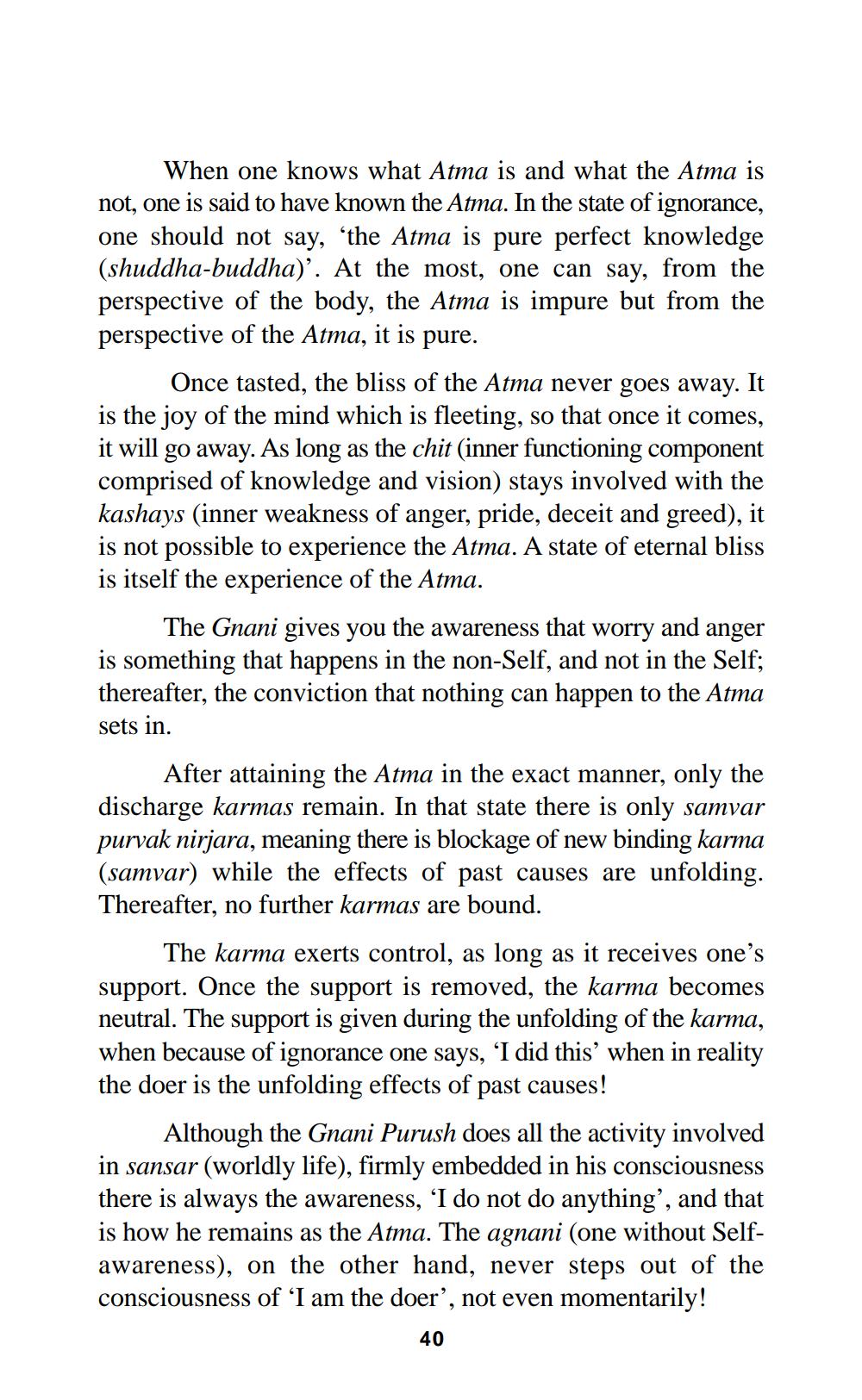________________
When one knows what Atma is and what the Atma is not, one is said to have known the Atma. In the state of ignorance, one should not say, 'the Atma is pure perfect knowledge (shuddha-buddha)'. At the most, one can say, from the perspective of the body, the Atma is impure but from the perspective of the Atma, it is pure.
Once tasted, the bliss of the Atma never goes away. It is the joy of the mind which is fleeting, so that once it comes, it will go away. As long as the chit (inner functioning component comprised of knowledge and vision) stays involved with the kashays (inner weakness of anger, pride, deceit and greed), it is not possible to experience the Atma. A state of eternal bliss is itself the experience of the Atma.
The Gnani gives you the awareness that worry and anger is something that happens in the non-Self, and not in the Self; thereafter, the conviction that nothing can happen to the Atma sets in.
After attaining the Atma in the exact manner, only the discharge karmas remain. In that state there is only samvar purvak nirjara, meaning there is blockage of new binding karma (samvar) while the effects of past causes are unfolding. Thereafter, no further karmas are bound.
The karma exerts control, as long as it receives one's support. Once the support is removed, the karma becomes neutral. The support is given during the unfolding of the karma, when because of ignorance one says, 'I did this' when in reality the doer is the unfolding effects of past causes!
Although the Gnani Purush does all the activity involved in sansar (worldly life), firmly embedded in his consciousness there is always the awareness, 'I do not do anything', and that is how he remains as the Atma. The agnani (one without Selfawareness), on the other hand, never steps out of the consciousness of 'I am the doer', not even momentarily!
40




